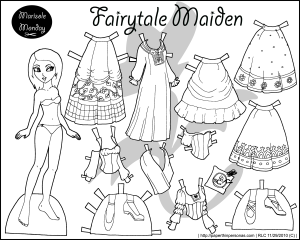You may remember that I work from home. My office is a shared space in my daughter’s room where I have my desk set up. When she’s home from college, the kitchen table becomes my desk. It’s not ideal by any means but you do what you gotta do!
The countdown has begun for the big move when the semester ends. My mental list is like the stack of continuous feed paper from a track fed dot matrix printer. Anyone remember those? They had the perforated feed strips on either side and connected end to end. You tore the strips off the sides and separated your papers. (Yes, I’m showing my age!)
We have definite dates approaching for Prom, baccalaureate, graduation, finals week, and graduation party. One dilemma was solved when we found out that the older daughter will be home for her younger sister’s high school graduation. This was a major relief as I was calculating in my head how I was going to drive the 2 hours to pick her up for the graduation and then get her back down there so she didn’t miss her finals.
{[X(C8H10N4O2)]/6Z}4 /[G(m1m2/r2)]∑
The amount of caffeine necessary divided by the hours of sleep I would have to miss to the 4th power, the sum divided by the gravitational pull and tidal state and the sigma of the effects of the moon phase. Or something like that. Ever notice how most of what we worry about and try to figure out in our heads is rarely a real issue?
Yes, I obsess over little details like that.
I’m a mom – it’s what I do.
Anyway, after checking the calendar (DUH!) my worries were for naught as the timetable works out. I have the party to plan, car maintenance to schedule, home repairs to be completed before the big party date!
I would be lost without my planner. Back in the day, I was never without my Dayrunner. Things are a little less hectic now but the planner is still an essential tool for me. Mine is a compact size that goes everywhere with me. Oh, I have apps on my phone but it’s not the same as my planner.
I get the dates marked on the planner with appropriate color coded highlighter and realize I need to schedule time between now and then to work on some things like party planning and home repairs. (It’s not any major repairs, mostly fresh paint and replace the flooring in our kitchen before we have guests over. Frankly, I’d be embarrassed to have guests over right now with broken tiles on the floor.)
As I look at the planner, I start getting that anxious feeling. The one that says “ you don’t have any time to write”. A few months ago I would have gone into a tailspin, had a cry-fest, wallowed in my excuses of why I couldn’t write – but not today. Today my voice of reason says “schedule time”. I’ll skip the rest of the self talk that went from whining, to the drill Sergeant barking, to the pouting, then finally the calm counselor asking why I never allow my own dreams to have any priority? (Thanks to Aedan, that voice has gotten louder.) The obvious solution then was to schedule the time right? I have my planer out, I’m already blocking off time to get things done why not allow myself a chance?
I’ve been quietly (mostly quietly, I have piped up a few times when I had a really good day here and there.) plugging away on a contemporary romance. My minimal daily word count is only 500. I changed that from a much higher count to cut myself some slack and not beat myself up for failing to meet the higher count. Too many times in the past I spent more time beating myself up for failing to meet my goal for the day and not enough time actually writing. Of course after berating myself I was in no mental state to write. Visious cycle – that! I figure that if I schedule an hour, even if I stare at a blinking cursor part of that time I can still manage 500 words. At least it’s something.
Each day I made a note on the scene I would be working on based on my outline. Bear in mind, I’ve already deviated from my original outline but based on the planned storyline, I only have fifteen (15!) more days of writing until I type “The End”.
That’s roughly 7500 to 10,000 words. Can I let you in on a secret?
Lean in close!
I already have the bulk of six chapters written I just need to tweak them a bit based on my earlier deviations So I could be typing “The End” even sooner.
On my time line, the fifteen days coincide with the day my eldest will return from college and I have to make the big move to the kitchen table. I’m going to go get a refill on my coffee to let that sink in for a bit.
The reality hit me square in the face . . .
I could be done with this book in 3 weeks! I can be finished with Red Wine & Roses before I have to relocate to the kitchen table as my desk! Do you realize how BIG that is?
While I’m feeling the stress of a hectic schedule with the multiple responsibilities of mother, wife, employee, writer, homemaker I just got a HUGE jolt of excitement that is both intoxicating and exhilarating.
It’s a similar feeling to running the last leg of the mile run. Rounding the third corner of lap four, on the backside of the track, lungs burning, legs feeling like lead, and the runners begin to pass as my energy wanes.
Not this time!
I can almost hear my Chatty Chicks Morning Sprinters encouraging me.
“You can do it! You’re almost there! Don’t give up now! You got this!”
It’s just the boost I need for that last jolt of adrenaline to kick in and quicken my pace to the finish line. Finishing has been the hardest part for me. The momentum is there if I can keep up the pace.
Isn’t it odd how when you focus on something else and stop stressing over a thing, that is when you often get answers and solutions to the thing you were stressing over? Have you ever gotten weary and felt like you would neer cross the finish line? Have you quit running and are walking the back stretch?
It’s funny how things work out. Sometimes we just need to step back and let them work themselves out.
Write on my friends, write on!

















You must be logged in to post a comment.